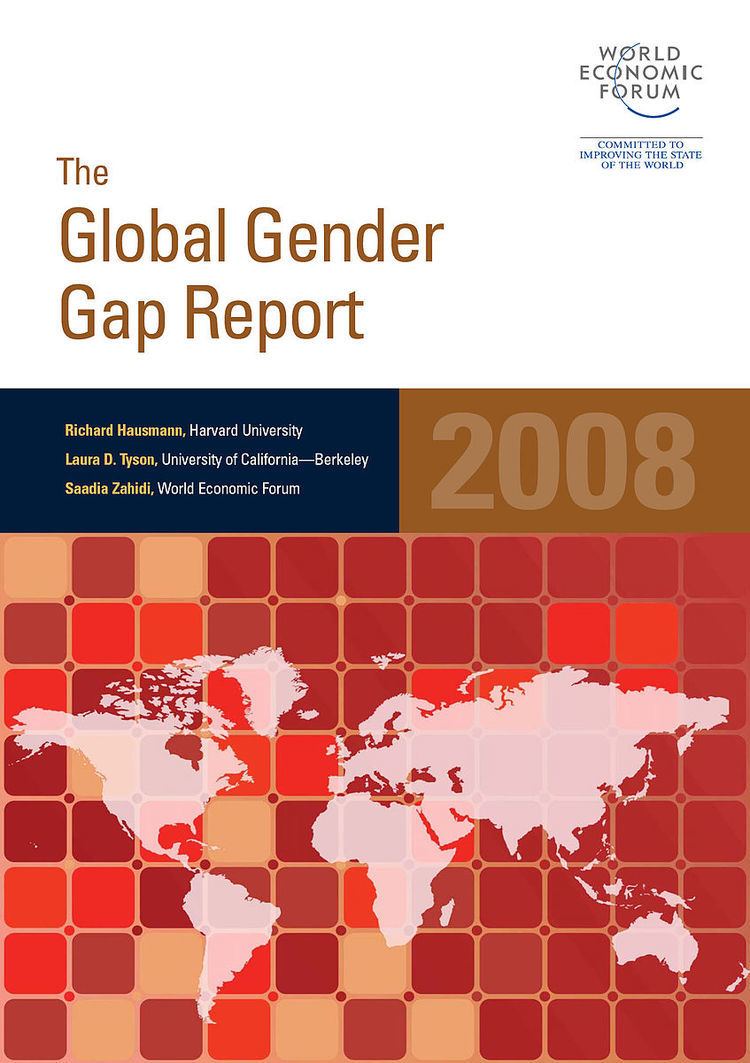 | ||
The Global Gender Gap Report was first published in 2006 by the World Economic Forum. The 2016 report covers 144 major and emerging economies. The Global Gender Gap Index is an index designed to measure gender equality.
Contents
Methodology
The report’s Gender Gap Index ranks countries according to calculated gender gaps. The assumption is that women are strictly disadvantaged compared to men and as such, only measures where women are traditionally disadvantaged to men are used. Information about gender imbalances to the advantage of women is explicitly prevented from affecting the score. So, for example, the indicator "number of years of a female head of state (last 50 years) over male value" would score 1 if the number of years was 25, but would still score 1 if the number of years was 50. Due to this methodology, gender gaps that favor women over men are reported as equality.
The three highest ranking countries have closed over 84% of their gender gaps, while the lowest ranking country has closed only a little over 50% of its gender gap. It "assesses countries on how well they are dividing their resources and opportunities among their male and female populations, regardless of the overall levels of these resources and opportunities," the Report says. "By providing a comprehensible framework for assessing and comparing global gender gaps and by revealing those countries that are role models in dividing these resources equitably between women and men, the Report serves as a catalyst for greater awareness as well as greater exchange between policymakers."
The report examines four overall areas of inequality between men and women in 130 economies around the globe, over 93% of the world’s population:
Thirteen out of the fourteen variables used to create the index are from publicly available "hard data" indicators from international organizations, such as the International Labour Organization, the United Nations Development Programme and the World Health Organization.
WEF Global Gender Gap Index rankings
The highest possible score is 1 (equality or better for women, except for lifespan, 106% or better for women) and the lowest possible score is 0. Data for some countries are unavailable.
